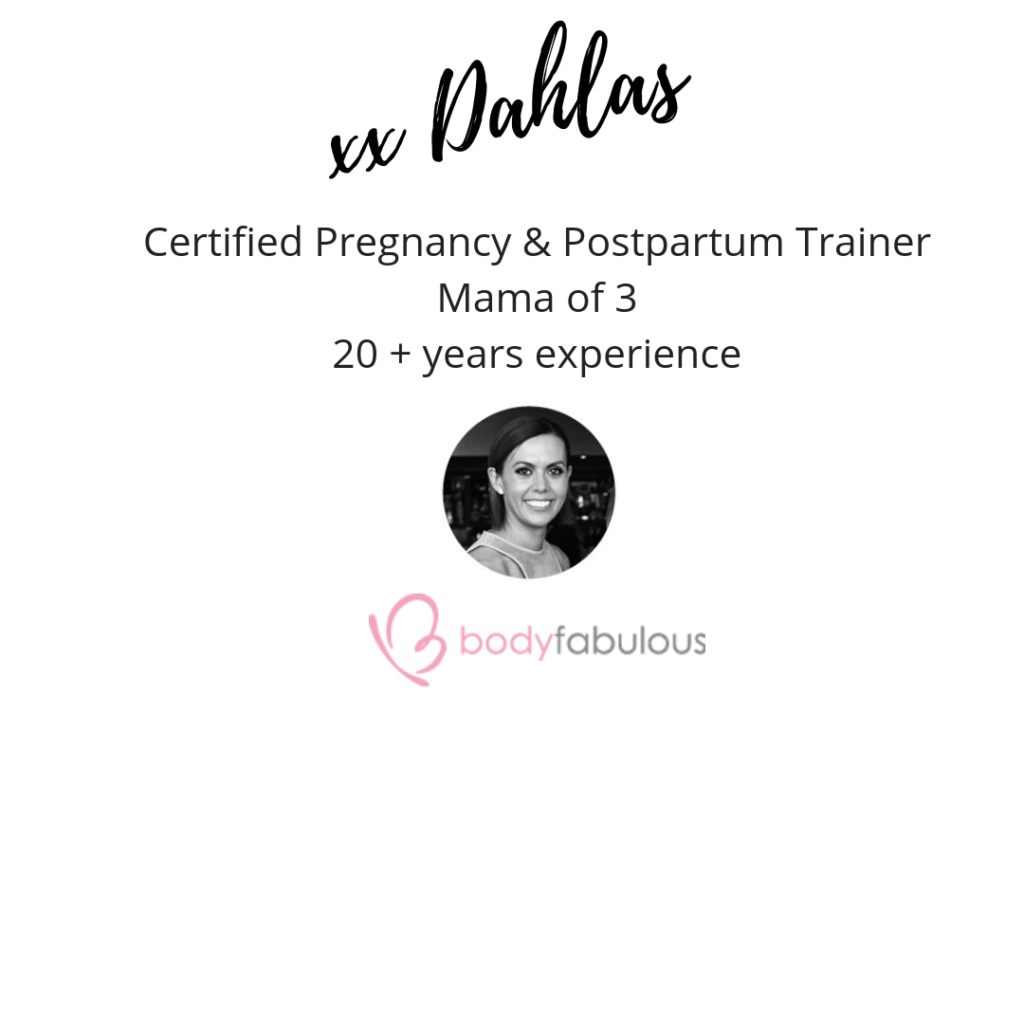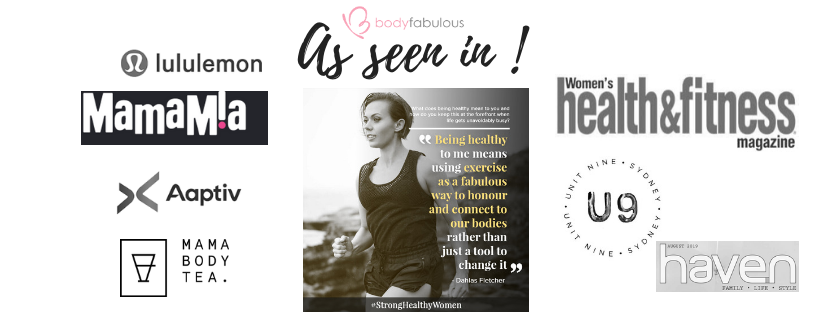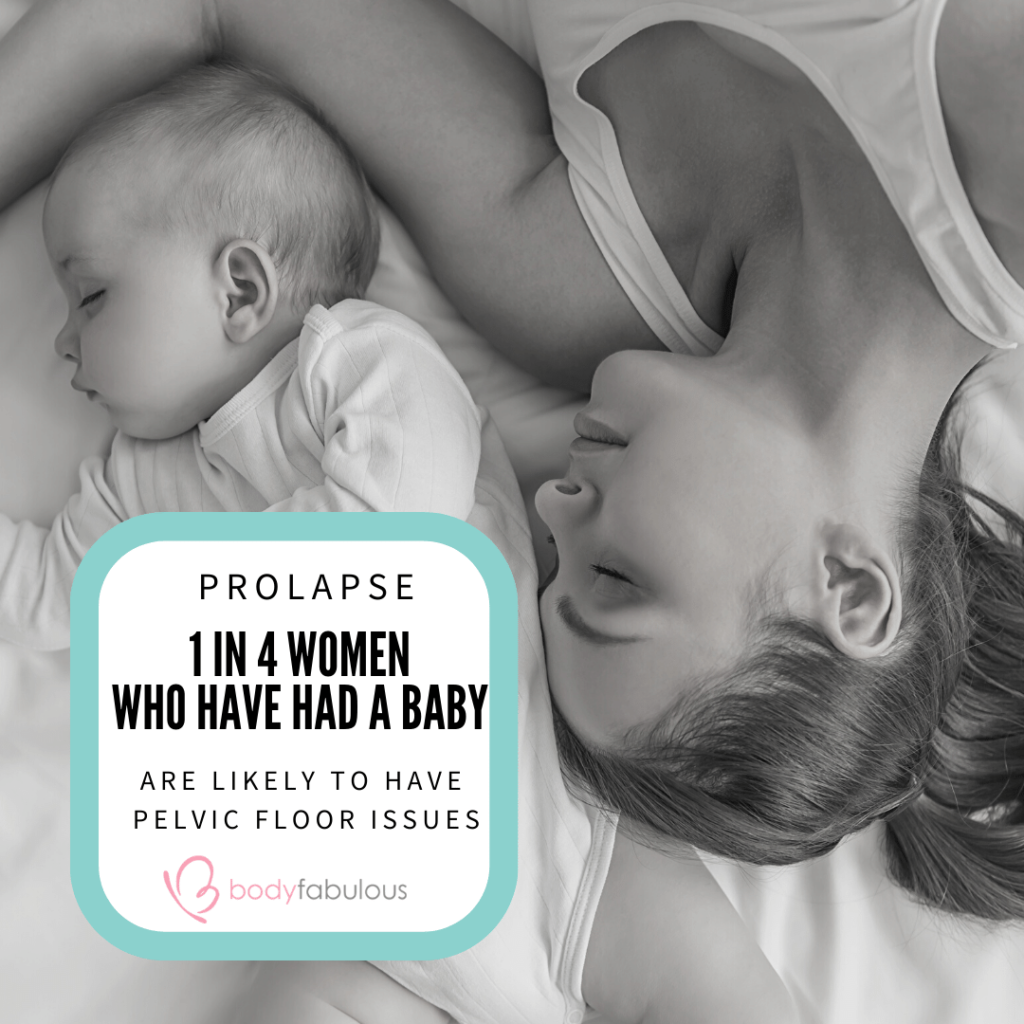If you have given birth (and yes birth includes a c-section), 6 weeks, 6 months or beyond 6 years ago you owe it to yourself to have a good understanding about what a prolapse is.
Why ? As current research says 50% of women who have ever given birth are likely to have some form of pelvic floor dysfunction including prolapse.
Learn here, about exactly what a prolapse is. Also, please don’t put your head in the sand and think this is something that only occurs to women over the age of 50 !
Take 5 minutes to get empowered and get educated – your body will thank you !
Signs and symptoms of a prolapse
Many women with prolapse have no symptoms at all. However, you could possibly be experiencing prolapse if you have any of the following symptoms :
- Urinary incontinence / leaking
- Difficulty with bowel movements
- A feeling of heaviness or pressure in your pelvic floor
- You can feel your pelvic organs bulging down below !
- Leaking when you sneeze or laugh could be a symptom of pelvic floor dysfunction. Don’t dismiss it.
POP (pelvic organ prolapse) can be tricky. As many women who have some degree of prolapse are unaware of it.
This could be because they’ve never had a thorough internal examination of the pelvis. Regardless if you have had a c-section or vaginal birth, please see a Women’s Health Physio for a full assessment at 15 weeks postpartum or immediately, if you have any symptoms listed above.
POP may also be “missed” as some women may have no symptoms, or they’ve just simply never heard of it before and assume any symptoms they’re having are “normal.”….and yep sista as mentioned – “peezing” is NOT normal. Please get it checked out !
Can I exercise with a prolapse?
YES, you absolutely can exercise safely with prolapse, or prevent it during pregnancy and while your body is healing postpartum.
Discovering, that you have a prolapse can be incredibly overwhelming. About 1 in 4, ladies who have ever given birth (c-section or vaginal) have this issue, so please understand you are not alone. Mentally, try to view POP like any other form of injury to your body, for example a sprained ankle.
You wouldn’t ignore the symptoms of pain in your ankle nor would you launch into intense forms of exercise with this condition would you ?
I hope not. Instead you would focus on rehabilitation (with this assistance of professionals) and specialised movements to improve the condition. This is exactly what can be done with a prolapse. Besides, the pelvic floor is another muscle that is part of your body, so you should not be embarrassed or ashamed !
Exercise programming and prolapse
If you do have a prolapse or any pelvic floor issues, there are some things to keep in mind with your exercise programming. Movements and exercise needs to happen in a way that strengthens your body and supports your core and pelvis, but doesn’t create an environment where the pelvic organs are stressed or have added pressure placed upon them.
Some examples of exercises that can cause added stress to the pelvic floor are :
- Burpees
- Skipping – double unders
- Box jumps
- Planks, Crunches, Russian Twists and sit ups
- Running
- Toes to bar
- Drawing navel to spine or clenching glutes and core.
- Breath holding
Alternatively, specialised exercise for prolapse can greatly improve and manage symptoms, however certain exercises (like above) are contraindicated for prolapse or pelvic floor dysfunction– and can make things worse or cause permanent damage.
Make your body a priority
- At least 85% of women will have a baby in their lives
- Post baby – all women are postpartum FOREVER so specialised knowledge is required about how to adapt to their changed or changing body.
- More than 8/10 women are NOT receiving the optimal support and coaching from their exercise trainer. Unfortunately as a Personal Trainer you are commonly educated about every other muscle in the body – apart from the pelvic floor (..I know this as I was one of them learn more)
- The majority of information available for pregnant and postpartum women is outdated and harmful.
If you are not sure or you feel the trainer or coach you are working with, is unaware of exactly what a prolapse or what movements are optimal for the pelvic floor is. Please make your own body a priority – reach out to a fully certified Pregnancy and Postpartum Trainer who can guide you and also work closely with your Physio.



About Dahlas
Dahlas Fletcher is one of Australia’s most respected and successful certified and experienced Pregnancy and Female Fitness Trainers. Her goal is to help you be the happiest, most fabulous version of yourself, inside and out.







